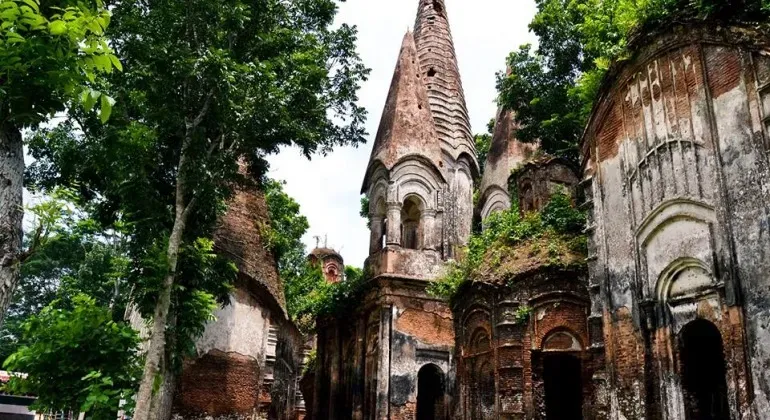Momin Masjid (Momin Masjid) is one of the architectural monuments in the Akan house of Burirchar village north of Mathbaria in Pirojpur district. Among the most beautiful mosques in the world, the century-old Momin Masjid of Mathbaria ranks 23rd and is the only wooden Muslim architecture in South Asia. In 1913 Maulvi Momin Uddin Akon started the construction of the mosque in his house with the help of 21 artisans brought from Swarupkathi in the then Barisal district. Momin Masjid is built using natural colors on scarce ironwood and Burma teak wood. Islamic culture, calligraphy, interesting designs of various flowers, leaves and fruits are carved on the wooden walls of the mosque in a wonderful aesthetic. After about 7 years of tireless work, the construction work of Momin Masjid, which is a mixture of Indo-Persian and European architecture, was completed in 1920.
Momin Masjid with tin shed chauchala is 24 feet long and 18 feet wide. The fence around the mosque is divided into 3 parts. The mosque has 2 windows in North-South and 4 in East-West for a total of 12 windows. Most interesting is the calligraphy on the elaborate entrance and arches of the mosque. On the upper left side of the entrance, the names of the four Caliphs of Islam and the name of Hazrat Muhammad (PBUH) are decorated in Arabic letters. One of the characteristics of the mosque is that no iron or star was used in its construction. Mohammad Shahidullah, the grandson of Momin Akan wrote a book titled “Momin Masjid: Smriti Bismriti Khata” on the archaeological significance of Momin Masjid and the need for maintenance. As a result, the mosque was declared as a protected antiquities in 2003. In 2008, under the archeology department of Bangladesh government, some changes were made to the original design of the mosque by using iron in the renovation of the mosque. Many visitors come from far and wide to see this mosque for its interesting geometric designs and Arabic calligraphy. The main road of Udayatara Burirchar village is named after Momin Masjid.

 CholoZai
CholoZai



